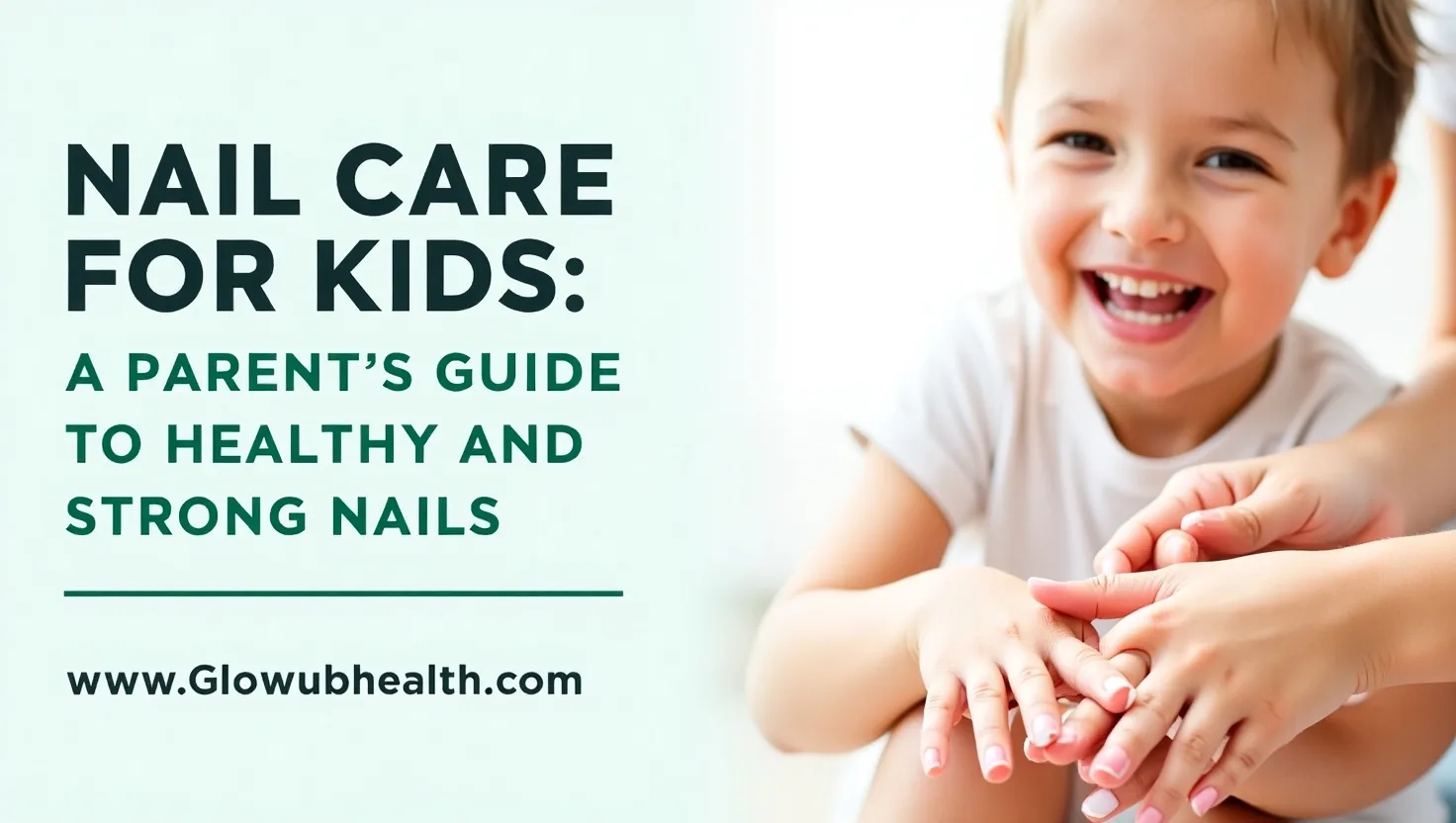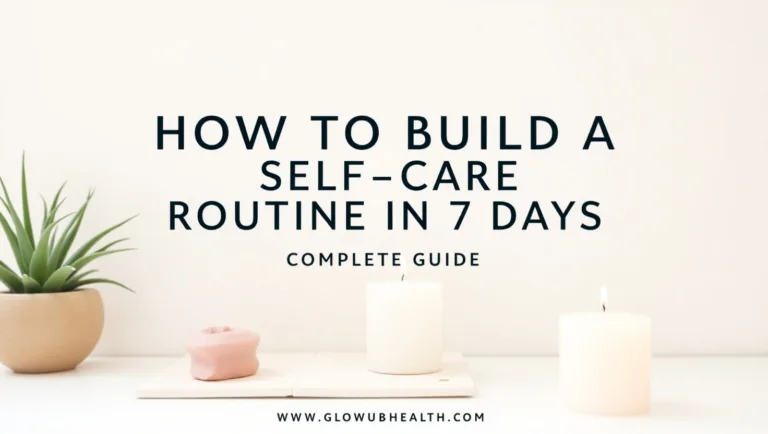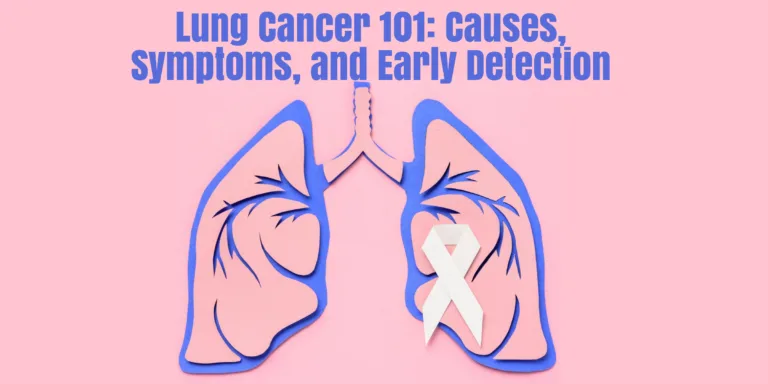Nail Care for Kids: A Parent’s Guide to Healthy and Strong Nails
Proper nail care for kids is not only essential for maintaining overall hygiene but also for preventing infections and promoting strong, healthy nail growth. Children’s nails can harbor dirt, bacteria, and other harmful agents if not kept clean, and neglecting nail care can lead to issues such as hangnails, ingrown nails, and even fungal infections.
In this comprehensive guide, we explore everything you need to know about nail care for kids—from how to trim your child’s nails without tears or tantrums to daily habits that ensure good nail hygiene. We’ve structured the guide into clearly defined sections, including detailed steps, lists of recommended practices, and a helpful table summarizing key tips. Let’s dive in!
This article is for informational purposes only and does not replace professional medical advice. Always consult your pediatrician or dermatologist for concerns regarding your child’s nail or skin health.
1) Why Nail Care for Kids Is Essential for Their Health

Understanding the Importance
Children explore the world with their hands. Whether they’re playing, drawing, or eating, their nails come in contact with many surfaces. Without proper nail care, these surfaces can transfer dirt and bacteria to their skin and mouth. Maintaining healthy nails prevents:
- Infections: Bacteria or fungus can thrive under unclean nails.
- Accidental Scratches: Long, jagged nails can cause unintentional injuries.
- Allergic Reactions: Dirt and chemicals can trigger skin reactions.
Benefits of Good Nail Hygiene
- Improved Overall Health: Clean nails reduce the spread of germs.
- Enhanced Appearance: Well-maintained nails contribute to a neat and tidy appearance.
- Injury Prevention: Proper trimming minimizes the risk of scratches and accidental cuts.
2) How to Trim Your Child’s Nails Without Tears or Tantrums

Step-by-Step Guide
Step 1: Choose the Right Time
- Trim nails after a warm bath when they are soft.
- Avoid trimming when your child is tired or upset.
Step 2: Prepare the Tools
- Use baby nail scissors or clippers with rounded edges.
- Ensure tools are sterilized with rubbing alcohol before use.
Step 3: Create a Calm Environment
- Find a quiet, well-lit area.
- Use a favorite book or gentle music to distract your child.
Step 4: Trim Carefully
- Hold your child’s hand firmly yet gently.
- Cut nails straight across to prevent ingrown nails.
- Smooth any sharp edges with a soft nail file.
Tips to Prevent Tantrums
- Gradually introduce the nail trimming routine to build comfort over time.
- Offer small rewards (stickers or a short playtime) after the trimming session.
- Explain the process in simple terms to reassure your child.
3) How to Take Care of Your Nails for Kids: Daily Hygiene Tips
Daily Routine Essentials
Washing and Drying:
- Teach children to wash their hands thoroughly, including under the nails, at least twice a day.
- Use a soft nail brush during washing to remove debris.
- Dry nails completely to avoid fungal growth.
Read More: Good Hygiene for Kids: Teaching Essential Habits Early
Moisturizing:
- Apply a child-friendly lotion or oil to keep nails and cuticles hydrated.
- Consider using natural moisturizers like coconut or olive oil.
Avoiding Nail Biting:
- Use bitter-tasting nail polish designed for children, if necessary.
- Discourage nail biting by keeping nails short.
Creating a Checklist
- Morning Hand Wash: Scrub under nails.
- After Play: Check and clean nails.
- Before Bed: Dry and moisturize.
- Weekly Nail Trimming: Maintain proper length.
4) What Is Good Nail Hygiene? Key Habits for Healthy Nails
Good nail hygiene is achieved through regular practices that keep nails clean, trimmed, and free from harmful bacteria. Here are the key habits:
- Safe Practices: Avoid sharing nail tools and keep them sanitized.
- Consistent Washing: Use soap and water regularly.
- Proper Drying: Pat nails dry with a clean towel.
- Regular Trimming: Keep nails at an optimal length.
- Cuticle Care: Avoid cutting cuticles; instead, gently push them back.
Table: Key Nail Hygiene Habits
| Habit | Description | Benefits |
|---|---|---|
| Regular Washing | Clean nails with soap and water daily | Removes germs and dirt |
| Thorough Drying | Dry nails completely after washing | Prevents fungal growth |
| Routine Trimming | Cut nails every 1-2 weeks | Reduces injury risk and prevents dirt accumulation |
| Moisturizing | Apply lotion or oil after washing | Keeps nails and cuticles soft |
| Tool Sanitation | Sterilize nail clippers and files regularly | Prevents infection transmission |
5) Choosing the Right Nail Care Tools for Kids
Essential Tools and Their Uses
- Nail Clippers/Scissors with Rounded Edges: Specifically designed for small, delicate nails.
- Nail File/Emery Board: Smooths rough edges, preventing snags.
- Nail Brush: Helps remove dirt and debris during hand washing.
- Cuticle Pusher: Gently pushes back cuticles without causing damage.
Considerations When Choosing Tools
- Size and Design: Ensure the tool fits your child’s hand comfortably.
- Material Quality: Look for rust-resistant, durable materials.
- Ease of Use: Tools should be simple to operate to avoid accidental cuts.
6) Preventing Common Nail Problems in Children
Identifying and Addressing Issues
Hangnails and Ingrown Nails:
- Prevention: Trim nails straight and avoid cutting too close to the skin.
- Treatment: Soak the affected area in warm water and apply a mild antiseptic.
Nail Biting and Thumb Sucking:
- Prevention: Keep nails short and consider using a deterrent nail polish.
- Behavioral Tips: Offer alternative activities and positive reinforcement.
Fungal Infections:
- Prevention: Keep nails dry and clean.
- Treatment: Use child-safe antifungal creams if advised by a pediatrician.
Checklist for Nail Problem Prevention
- Monitor for any signs of redness or discomfort.
- Trim nails weekly.
- Clean under nails during every hand wash.
- Keep nail tools sanitized.
- Moisturize daily.
7) The Role of Nutrition in Nail Care for Kids
Nutrients for Healthy Nail Growth
Nourishing your child from within is just as important as external nail care. A balanced diet supports healthy nail growth:
- Zinc: Found in meats, legumes, and dairy, zinc helps repair damaged nail tissues.
- Biotin (Vitamin B7): Strengthens nails and is found in eggs, nuts, and whole grains.
- Vitamin E: Promotes nail health and is abundant in leafy greens, seeds, and nuts.
- Protein: Nails are made of keratin, a type of protein, so lean meats, fish, legumes, and dairy are essential.
Sample Daily Meal Plan for Nail Health
| Meal | Food Options | Key Nutrients |
|---|---|---|
| Breakfast | Scrambled eggs with spinach, whole grain toast | Protein, Biotin, Vitamin E |
| Snack | A handful of almonds or walnuts | Zinc, Vitamin E |
| Lunch | Grilled chicken salad with mixed vegetables | Protein, Vitamins A & C |
| Snack | Greek yogurt with berries | Protein, Calcium, Biotin |
| Dinner | Baked salmon, quinoa, and steamed broccoli | Omega-3 fatty acids, Protein, Zinc |
8) How Often Should You Trim Your Child’s Nails?
Recommended Trimming Frequency
- Fingernails: Typically, trim once a week to keep them neat and prevent dirt buildup.
- Toenails: Due to slower growth, trim every two weeks to avoid ingrown nails and maintain cleanliness.
Signs That It’s Time to Trim
- Nails visibly accumulate dirt or debris.
- Nails are long enough to scratch the face.
- Edges become jagged or start to curl.
9) Safe and Fun Ways to Teach Kids About Nail Care
Making Nail Care an Enjoyable Routine
Engaging Activities:
- Artistic Expression: Allow your child to choose colorful nail stickers or child-safe nail polish for a fun twist.
- Interactive Demonstrations: Show your child how you care for your nails and let them mimic you.
- Story Time: Read books or watch videos about personal hygiene and nail care.
Reward Systems:
- Use a sticker chart to track proper nail care.
- Offer small rewards after a week of consistent nail care routines.
Parent-Child Nail Care Sessions
- Set Aside Time Together: Dedicate a few minutes each week for a fun nail care session.
- Use Kid-Friendly Tools: Let your child choose their own nail care tools to boost their interest.
10) Nail Care for Kids: Best Practices for Strong and Clean Nails
Comprehensive Best Practices
Daily and Weekly Routines:
- Daily: Wash, dry, and moisturize hands and nails.
- Weekly: Trim nails, file edges, and check for any signs of infection.
Preventive Measures:
- Always ensure nail care tools are sanitized.
- Avoid allowing children to share nail tools.
- Regularly inspect nails for any abnormalities.
Summary Table of Best Practices
| Activity | Frequency | Benefits |
|---|---|---|
| Washing and Drying | 2-3 times daily | Removes germs, prevents infections |
| Nail Trimming | Weekly (fingernails) | Reduces risk of dirt accumulation |
| Moisturizing | Daily | Maintains softness and prevents cracking |
| Nail Inspection | Weekly | Early detection of infections or issues |
Conclusion
In conclusion, nail care for kids is a vital component of your child’s overall hygiene routine. With proper daily habits, the right tools, and a nutrient-rich diet, parents can ensure that their children enjoy healthy, strong, and clean nails. By implementing the strategies outlined in this guide—from how to trim your child’s nails without tears or tantrums to understanding what is good nail hygiene—you empower your child to develop lifelong self-care habits. Remember, consistent care and regular check-ups are key to preventing nail-related issues and ensuring that your child’s nails remain a testament to their overall well-being.
FAQ
1. How Often Should I Trim My Child’s Nails?
It’s recommended to trim your child’s fingernails once a week and toenails every two weeks. This prevents dirt buildup, accidental scratching, and the risk of ingrown nails.
2. What Is the Best Way to Trim a Child’s Nails Without Causing Tears?
-Trim nails after a warm bath when they are soft.
-Use baby nail scissors or clippers with rounded edges.
-Cut nails straight across to avoid ingrown nails.
–Distract your child with a favorite toy, book, or song.
-Reward good behavior with stickers or small treats.
3. How Do I Prevent My Child from Biting Their Nails?
-Keep nails trimmed short to reduce the temptation.
-Apply a bitter-tasting nail polish made for kids.
-Offer fidget toys to keep their hands busy.
-Praise and reward them for avoiding nail biting.
-Identify and address stress triggers that may lead to nail biting.
4. What Should I Do If My Child’s Nails Are Brittle or Weak?
-Ensure they get enough biotin, zinc, and protein from foods like eggs, nuts, and leafy greens.
-Keep their nails moisturized with coconut oil or child-safe lotion.
-Avoid excessive water exposure or harsh chemicals.
-Encourage glove-wearing during cold weather to prevent dryness.
5. What Are the Signs of a Nail Infection in Children?
Look for the following symptoms:
–Redness and swelling around the nail.
-Pus or discharge near the nail bed.
-Pain or tenderness when touching the nail.
-Peeling or cracking of the nail.
-If you notice these signs, consult a pediatrician for proper treatment.






